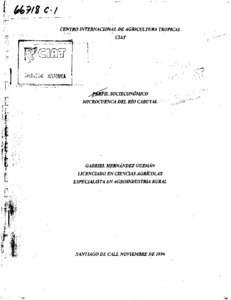Mission
To reduce hunger and poverty, and improve human nutrition in the tropics through research aimed at increasing the eco-efficiency of agriculture.
People
CIAT’s staff includes about 200 scientists. Supported by a wide array of donors, the Center collaborates with hundreds of partners to conduct high-quality research and translate the results into development impact. A Board of Trustees provides oversight of CIAT’s research and financial management.
Values
- Shared organizational ethic
- We respect each other, our partners, and the people who benefit from our work. We act with honesty, integrity, transparency, and environmental responsibility in all of our joint endeavors.
- Learning through partnerships
- We work efficiently and pragmatically together and with partners. Considering our diversity to be a key asset, we adapt readily to change and strive to improve our performance through continuous learning.
- Innovation for impact
- We develop innovative solutions to important challenges in tropical agriculture, resulting in major benefits for the people who support, participate in, and profit from our work.
Members:
Resources
Displaying 616 - 620 of 958Regional experience with Brachiaria: tropical America-humid lowlands
Brachiaria species have become important components of sown pastures in the humid lowlands of tropical America. This ecosystem occupies about 50 of Brazil; 60 of the area encompassed by Bolivia, Peru, and Ecuador; 14 of Mexico; and significant areas in other countries of the region. The cultivars most Comment* evaluated across sites are R decumbens cv. Basilisk, R brizantha cv. Marandu, R humidicola cv. Humidícola, and R dictyoneura cv. Llanero.





